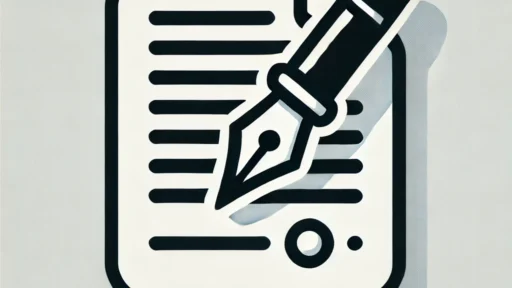When it comes to High Quality Transcription services, accuracy and quality are the two pillars that determine the reliability and usefulness of the final product. Whether you’re transcribing legal documents, medical records, business meetings, or academic research, the precision of the High Quality Transcription can make or break the value of the document.
In this article, we’ll explore how to evaluate accuracy and quality in transcription services, ensuring you get the most reliable transcripts for your needs.

Why Accuracy and Quality Matter
Accuracy in transcription is about more than just getting the words right; it’s about delivering High Quality Transcription that captures the exact meaning, tone, and context of what was said. A minor error can change the entire meaning of a sentence, leading to misunderstandings, legal complications, or flawed research outcomes. Ensuring High Quality Transcription is essential to avoid these pitfalls and maintain the integrity of the original content.
Quality, on the other hand, encompasses not only accuracy but also the readability, formatting, and overall presentation of the transcript. High Quality Transcription services ensure that the document is not only accurate but also easy to read and professionally presented.
The Impact of Poor Accuracy
Imagine you’re dealing with a legal case, and the High Quality Transcription of a deposition is critical because errors could change the meaning of a witness’s statement. This could lead to a wrongful judgment or a costly appeal.
In the medical field, High Quality Transcription is equally important, as inaccuracies in transcribing patient records could result in improper treatment or medication errors. In business, High Quality Transcription ensures that crucial meetings are accurately documented, preventing missed opportunities or misunderstandings. Clearly, accuracy isn’t just a nice-to-have; High Quality Transcription is essential.
How to Evaluate Accuracy in Transcription Services
1. Check the Accuracy Rate
A High Quality Transcription service is often measured by its accuracy rate, typically expressed as a percentage that indicates how closely the transcription matches the original audio. A reputable High Quality Transcription service should have an accuracy rate of 98% or higher. Be sure to ask potential providers about their accuracy rates and the methods they use to achieve and maintain high levels of accuracy in delivering High Quality Transcription results.
2. Consider the Transcription Method
There are two primary methods of transcription: manual (human) transcription and automated (AI-based) transcription. Manual transcription is typically more accurate, especially for complex or nuanced content, as human transcriptionists can understand context, tone, and subtleties better than AI.
However, some services use a combination of both, where AI provides a first draft that is then reviewed and corrected by a human transcriptionist, balancing speed and accuracy to ensure High Quality Transcription.
3. Look for Industry Expertise
Accuracy isn’t just about getting the words right—it’s also about understanding the content. Legal, medical, and technical transcriptions require specialized knowledge to ensure accuracy. A transcriptionist unfamiliar with legal jargon or medical terminology might misinterpret key terms, leading to significant errors. Choosing a service with experience in your specific industry is crucial.
4. Review Sample Transcripts
One of the best ways to evaluate the accuracy and High Quality Transcription service is to review sample transcripts. These samples will give you an idea of the service’s attention to detail, the clarity of the transcript, and how well the transcriptionist handles complex or technical content, ensuring High Quality Transcription throughout.
How to Evaluate Quality in Transcription Services
1. Assess the Formatting
Quality transcription services don’t just provide accurate text—they also deliver well-formatted documents. This includes proper paragraph structure, speaker identification, and time-stamping where necessary. Well-formatted transcripts are easier to read and use, whether they’re for legal proceedings, academic research, or business meetings.
2. Evaluate Readability
A High Quality Transcription is one that is easy to read and understand. This means that the High Quality Transcription should be free of spelling and grammatical errors, and the language should be clear and concise. The transcriptionist should also ensure that the High Quality Transcription accurately reflects the tone and intent of the original speaker.
3. Consider the Proofreading Process
Top-tier transcription services include a rigorous proofreading process as part of their quality assurance. After the initial transcription is completed, it should be reviewed by a second transcriptionist or editor to catch any errors or inconsistencies. This extra layer of review helps ensure that the final transcript is as accurate and polished as possible.
4. Check for Customization Options
High Quality Transcription also involves tailoring the transcript to meet specific client needs. Whether you need transcripts in a particular format, with specific speaker identifications, or with timestamps, the service should be able to accommodate your requirements. Customization options are a good indicator of a service’s commitment to delivering High Quality Transcription that is client-focused and meets the highest standards.
Ensure Accuracy and Quality with BlueNotary’s Online Notarization
When choosing a transcription service, accuracy and quality should be at the top of your list of priorities. By evaluating the service’s accuracy rate, transcription methods, industry expertise, and attention to formatting and readability, you can ensure that you receive transcripts that are not only correct but also useful and professionally presented. Remember, the value of your transcription depends on these factors, so don’t compromise on quality.
After securing accurate and high-quality transcripts, make sure they’re legally recognized with BlueNotary’s online notarization services. We provide a secure and convenient way to notarize your documents, giving you peace of mind that your transcriptions are both accurate and legally binding.
Frequently Asked Questions About Evaluating Accuracy and Quality in Transcription Services
Q1. What is a good accuracy rate for transcription services?
A good transcription service should offer an accuracy rate of 98% or higher. This ensures that the transcription is reliable and closely matches the original audio.
Q2. How does industry expertise affect transcription accuracy?
Industry expertise is crucial for understanding and accurately transcribing specialized terminology and jargon. Transcriptionists with experience in your field are more likely to produce accurate and relevant transcripts.
Q3. Why is manual transcription often more accurate than automated transcription?
Manual transcription is typically more accurate because human transcriptionists can understand context, tone, and nuances better than AI. They can also correct errors that automated systems might miss.
Q4. What should I look for in a quality transcript?
A quality transcript should be well-formatted, easy to read, and free of spelling and grammatical errors. It should accurately reflect the tone and intent of the original speaker.
Q5. How important is proofreading in the transcription process?
Proofreading is essential for ensuring accuracy and quality. A second review by a transcriptionist or editor helps catch any errors or inconsistencies, resulting in a polished final transcript.








